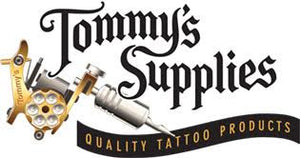Tattoo Inks Without Heavy Metals: Are They Real?

TL;DR:
While no ink can be guaranteed 100% free of all trace heavy metals due to the nature of raw pigments, many top tattoo ink brands (like StarBrite Colors) rigorously test and manufacture their inks to minimize contamination. Inks labeled as “heavy metal-free” often mean they fall below established safety thresholds or exclude known hazardous compounds.
Introduction
As health-conscious tattoo clients ask more about what’s in their ink, “heavy metal-free” has become a buzzword in the industry. But what does it actually mean? Can tattoo inks truly be free of all heavy metals—or is this a matter of trace amounts, regulations, and manufacturing precision?
Let’s explore what “heavy metal-free” means in context, how inks are made, and what tattoo artists and clients should know when choosing safe, clean tattoo pigments.

What Are Heavy Metals in Tattoo Ink?
Heavy metals such as lead, cadmium, mercury, nickel, chromium, cobalt, and arsenic may be found in some pigments used in tattoo inks—especially colored inks.
They may be present due to:
• Pigment sources (e.g., cadmium for reds/yellows, chromium for green)
• Contaminants in raw materials
• Processing residue from manufacturing
Importantly, these are not deliberately added in most modern inks—they’re incidental and regulated by thresholds.
What Does “Heavy Metal-Free” Mean?
A “heavy metal-free” claim doesn’t always mean zero heavy metals. In reality, it often means:
• The inks do not use metal-based pigments
• Any trace heavy metals are below safety limits set by regulatory agencies (e.g., REACH in the EU, FDA in the US)
• The manufacturer has tested for contaminants and has documentation to verify levels
So while no ink is literally metal-free, the term signals that steps have been taken to avoid known hazardous compounds and reduce contamination risks.
Is There a Regulatory Standard?
Yes, several regions have guidelines or restrictions:
EU (REACH Regulation):
• Banned pigments like Blue 15:3 and Green 7 due to potential toxicity
• Limits on heavy metals such as cadmium, arsenic, lead in cosmetic and tattoo products
• Manufacturers must test and disclose ingredients
USA (FDA):
• Tattoo inks are classified as cosmetics; ingredients must be safe for intradermal use
• FDA has issued recalls for inks found contaminated with bacteria or metals
• No universal “approval,” but testing and compliance are growing
How Manufacturers Reduce Heavy Metals
Leading ink manufacturers reduce heavy metal contamination by:
• Sourcing pharmaceutical-grade carriers and high-purity pigments
• Testing raw materials for contaminants
• Manufacturing in clean-room environments to prevent cross-contamination
• Gamma sterilization to remove microbial risks
Are Vegan Inks Also Heavy Metal-Free?
Not necessarily. “Vegan” refers to the absence of animal-derived ingredients. However, a vegan ink can still contain metal-based pigments unless it is also labeled and verified as heavy metal-safe or tested for contaminants.
StarBrite Colors: A Case Study in Clean Ink Practices
StarBrite Colors is an industry leader known for clean, professional-grade inks. While no ink brand can claim to be 100% metal-free, StarBrite adheres to several practices to reduce contamination:
• Made in ISO-certified clean rooms
• Gamma sterilized to eliminate pathogens
• No banned pigments as per EU REACH guidelines
• Transparency in labeling and traceability
These practices help ensure inks meet stringent global safety expectations.
Should You Worry as a Client or Artist?
For clients:
• Ask your artist what ink brand they use
• Choose studios that prioritize safe, regulated inks
For artists:
• Keep SDS (Safety Data Sheets) on file
• Stay updated on regulatory changes
• Work with trusted, transparent ink brands
Conclusion
Tattoo inks that are labeled “heavy metal-free” or “low in heavy metals” are typically made with great care to avoid contamination and meet international safety thresholds. While trace metals may be unavoidable due to pigment sourcing, modern manufacturing has made inks significantly safer than in past decades.
Choosing high-quality, tested products from trusted manufacturers like StarBrite Colors ensures your work is both stunning and safe—for your clients and your studio’s reputation.
FAQs
Q: Can tattoo ink be 100% free of heavy metals?
Not entirely. Even natural pigments can contain trace levels. However, safe formulations stay within limits set by REACH or FDA guidance.
Q: What colors are most likely to contain heavy metals?
Bright reds, yellows, and greens often use metal-based pigments, but many brands now offer cleaner alternatives.
Q: Are all EU-compliant inks safe from heavy metals?
They meet the current REACH safety thresholds, which are among the strictest globally. Look for REACH-compliant labeling.
Q: What’s the difference between “vegan ink” and “heavy metal-free ink”?
Vegan refers to ingredients not derived from animals; heavy metal-free relates to pigment composition and purity.
Q: Do black inks contain heavy metals?
Most black inks use carbon black, which is less likely to include metals. However, testing is still essential.










